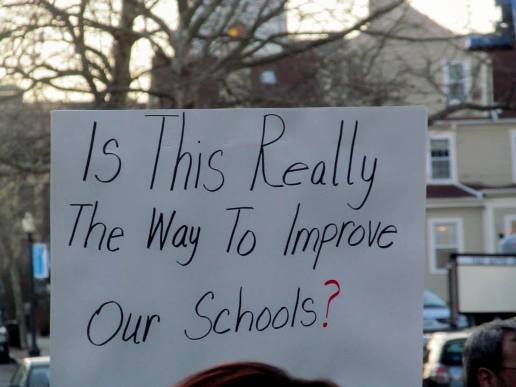Polaroid, Acushnet Foundation, and Steere Funds to Offer $102,500 for Adult Education, Family Literacy Programs
Three funds of the Community Foundation of Southeastern Massachusetts (CFSEMA) are once again teaming up to develop the Greater New Bedford work force by funding family literacy and adult education programs.
Requests for Proposals (RFPs) for up to $88,000 from the Polaroid Fund and up to $14,500 in matching funds from the Acushnet Foundation and Steere Funds are available from the Community Foundation or its website, cfsema.org. They are due at the Community Foundation office, 63 Union Street, New Bedford, no later than 4 p.m. March 21, 2014. An Applicants Conference for agencies interested in applying for a grant is scheduled for March 4 from 10:30 to 11:30 a.m. in the Community Foundation’s Board Room.
“The purpose of the project is to support adult educational opportunity, as well as to promote literacy for families with young children,” said CFSEMA President Craig J. Dutra. “To help accomplish this, the grants will support programs that help the most vulnerable people in the community build the skills and literacy that will help them reach their educational and employment goals.”
In 2006, the Community Foundation began managing the New Bedford Area grant program of the Polaroid Fund, a discretionary fund of the Boston Foundation. The Polaroid Fund will distribute up to $100,000 each year to support organizations or collaboratives that promote career advancement and economic security for Greater New Bedford residents, with an emphasis on English for Speakers of Other Languages (ESOL) and Adult Education (ABE and GED courses.)
This year, a total of $76,000 from the Polaroid Fund will support workforce development programming, with an emphasis on English for Speakers of Other Languages (ESOL) and Adult Basic Education (ABE) and General Education Development (GED) classes. Another $26,500 – $12,000 each from the Polaroid Fund and the Acushnet Foundation Fund and $2,500 from the Steere Fund – will support family literacy programs that integrate early literacy programming for children birth to three years old with ABE/ESOL and parenting courses.
-Organizations can request up to $15,000 for the nine-month period from April 1 to Dec. 31, 2014, for projects that:
- Mitigate barriers to learning such as cultural and language differences,transportation and childcare issues, and fragmentation of available services.
- Advocate for public policy changes that increase provider capacity, create employer incentives to offer workplace literacy programs, and increases state and local funding.
- Advocate for greater private and employer investment in worker education.
- Support programs integrating early literacy programming for children birth to three years old with ABE/ESOL and parenting courses.
- Protect the cultural context and bonds of a community by preserving and supporting neighborhood based programs providing access to literacy and ABE/ESOL classes.
- Address gaps in programming and provider services. Encourage programming for all stages of adult learning, from adult basic education to preparation for successful enrollment in post-secondary education and training.
- Support capacity building of programs that meet one or more of the objectives listed above.
Early Literacy Program applications can also request up to $15,000.
The Greater New Bedford region faces numerous workforce challenges, including high unemployment, an average income significantly lower than the state average, a substantial percentage of residents who do not speak English as their primary language, and low education levels.
Since early 2008, unemployment in New Bedford has climbed steadily, with the December 2013 unemployment rate of 12.7% still being one of the highest of any area in the State of Massachusetts and nearly double the state average of 6.7%. More than a third of New Bedford area residents speak a language other than English at home, compared to the state average of about a fifth.
According to the UMass Center for Policy Analysis, “Much of the SouthCoast’s labor force consists of low skilled workers with low levels of education. This is especially true in Fall River and New Bedford, although many of the region’s suburban towns also have average educational attainment levels that are below the state averages.”
In order to achieve viable workforce development and work readiness in this region, a range of programming and supports are needed for New Bedford’s population. Non-English speakers need to become proficient enough in English to achieve their educational goals and perform well in the workplace. Adults without high school diplomas need ready access to pre-GED and GED classes. GED recipients need help bridging the gap between learning on the high school level and participating successfully in post-secondary education environments. Immigrants need access to citizenship classes and information about worker’s rights. Service providers need support to increase their effectiveness and capacity. Employers need incentives and information that enables them to fully participate in worker education programming. And community organizing efforts need support to secure increased local, state and federal funding commitments.
Three Community Foundation Funds – Polaroid, Acushnet Foundation, and the Steere Fund – are once again teaming up to offer $102,500 in funding for workforce development and family literacy programs in Greater New Bedford. Attached is a press release; we hope you will run it as often as possible before the March 21 deadline.












